Contents
Articles
2025
- RCS Archival and you: clearing up the misconceptions
- Device Trust from Android Enterprise: What it is and how it works (hands-on)
- Android developer verification: what this means for consumers and enterprise
- AMAPI finally supports direct APK installation, this is how it works
- The Android Management API doesn't support pulling managed properties (config) from app tracks. Here's how to work around it
- Hands-on with CVE-2025-22442, a work profile sideloading vulnerability affecting most Android devices today
- AAB support for private apps in the managed Google Play iFrame is coming, take a first look here
- What's new (so far) for enterprise in Android 16
2024
- Android 15: What's new for enterprise?
- How Goto's acquisition of Miradore is eroding a once-promising MDM solution
- Google Play Protect no longer sends sideloaded applications for scanning on enterprise-managed devices
- Mobile Pros is moving to Discord
- Avoid another CrowdStrike takedown: Two approaches to replacing Windows
- Introducing MANAGED SETTINGS
- I'm joining NinjaOne
- Samsung announces Knox SDK restrictions for Android 15
- What's new (so far) for enterprise in Android 15
- Google quietly introduces new quotas for unvalidated AMAPI use
- What is Play Auto Install (PAI) in Android and how does it work?
- AMAPI publicly adds support for DPC migration
- How do Android devices become certified?
2023
- Mute @channel & @here notifications in Slack
- A guide to raising better support requests
- Ask Jason: How should we manage security and/or OS updates for our devices?
- Pixel 8 series launches with 7 years of software support
- Android's work profile behaviour has been reverted in 14 beta 5.3
- Fairphone raises the bar with commitment to Android updates
- Product files: The DoorDash T8
- Android's work profile gets a major upgrade in 14
- Google's inactive account policy may not impact Android Enterprise customers
- Product files: Alternative form factors and power solutions
- What's new in Android 14 for enterprise
- Introducing Micro Mobility
- Android Enterprise: A refresher
2022
- What I'd like to see from Android Enterprise in 2023
- Thoughts on Android 12's password complexity changes
- Google Play target API requirements & impact on enterprise applications
- Sunsetting Discuss comment platform
- Google publishes differences between Android and Android Go
- Android Go & EMM support
- Relaunching bayton.org
- AER dropped the 3/5 year update mandate with Android 11, where are we now?
- I made a bet with Google (and lost)
2020
- Product files: Building Android devices
- Google announce big changes to zero-touch
- VMware announces end of support for Device Admin
- Google launch the Android Enterprise Help Community
- Watch: An Android Enterprise discussion with Hypergate
- Listen again: BM podcast #144 - Jason Bayton & Russ Mohr talk Android!
- Google's Android Management API will soon support COPE
- Android Enterprise in 11: Google reduces visibility and control with COPE to bolster privacy.
- The decade that redefined Android in the enterprise
2019
- Why Intune doesn't support Android Enterprise COPE
- VMware WS1 UEM 1908 supports Android Enterprise enrolments on closed networks and AOSP devices
- The Bayton 2019 Android Enterprise experience survey
- Android Enterprise Partner Summit 2019 highlights
- The Huawei ban and Enterprise: what now?
- Dabbling with Android Enterprise in Q beta 3
- Why I moved from Google WiFi to Netgear Orbi
- I'm joining Social Mobile as Director of Android Innovation
- Android Enterprise in Q/10: features and clarity on DA deprecation
- MWC 2019: Mid-range devices excel, 5G everything, form-factors galore and Android Enterprise
- UEM tools managing Android-powered cars
- Joining the Android Enterprise Experts community
- February was an interesting month for OEMConfig
- Google launch Android Enterprise Recommended for Managed Service Providers
- Migrating from Windows 10 Mobile? Here's why you should consider Android
- AER expands: Android Enterprise Recommended for EMMs
- What I'd like to see from Android Enterprise in 2019
2018
- My top Android apps in 2018
- Year in review: 2018
- MobileIron Cloud R58 supports Android Enterprise fully managed devices with work profiles
- Hands on with the Huawei Mate 20 Pro
- Workspace ONE UEM 1810 introduces support for Android Enterprise fully managed devices with work profiles
- G Suite no longer prevents Android data leakage by default
- Live: Huawei Mate series launch
- How to sideload the Digital Wellbeing beta on Pie
- How to manually update the Nokia 7 Plus to Android Pie
- Hands on with the BQ Aquaris X2 Pro
- Hands on with Sony OEMConfig
- The state of Android Enterprise in 2018
- BYOD & Privacy: Don’t settle for legacy Android management in 2018
- Connecting two Synologies via SSH using public and private key authentication
- How to update Rsync on Mac OS Mojave and High Sierra
- Intune gains support for Android Enterprise COSU deployments
- Android Enterprise Recommended: HMD Global launch the Nokia 3.1 and Nokia 5.1
- Android Enterprise Partner Summit 2018 highlights
- Live: MobileIron LIVE! 2018
- Android Enterprise first: AirWatch 9.4 lands with a new name and focus
- Live: Android Enterprise Partner Summit 2018
- Samsung, Oreo and an inconsistent Android Enterprise UX
- MobileIron launch Android Enterprise work profiles on fully managed devices
- Android P demonstrates Google's focus on the enterprise
- An introduction to managed Google Play
- MWC 2018: Android One, Oreo Go, Android Enterprise Recommended & Android Enterprise
- Enterprise ready: Google launch Android Enterprise Recommended
2017
- Year in review: 2017
- Google is deprecating device admin in favour of Android Enterprise
- Hands on with the Sony Xperia XZ1 Compact
- Moto C Plus giveaway
- The state of Android Enterprise in 2017
- Samsung launched a Note 8 for enterprise
- MobileIron officially supports Android Enterprise QR code provisioning
- Android zero-touch enrolment has landed
- MobileIron unofficially supports QR provisioning for Android Enterprise work-managed devices, this is how I found it
- Hands on with the Nokia 3
- Experimenting with clustering and data replication in Nextcloud with MariaDB Galera and SyncThing
- Introducing documentation on bayton.org
- Goodbye Alexa, Hey Google: Hands on with the Google Home
- Restricting access to Exchange ActiveSync
- What is Mobile Device Management?
- 8 tips for a successful EMM deployment
- Long-term update: the fitlet-RM, a fanless industrial mini PC by Compulab
- First look: the FreedomPop V7
- Vault7 and the CIA: This is why we need EMM
- What is Android Enterprise (Android for Work) and why is it used?
- Introducing night mode on bayton.org
- What is iOS Supervision and why is it used?
- Hands on with the Galaxy TabPro S
- Introducing Nextcloud demo servers
- Part 4 - Project Obsidian: Obsidian is dead, long live Obsidian
2016
- My top Android apps 2016
- Hands on with the Linx 12V64
- Wandera review 2016: 2 years on
- Deploying MobileIron 9.1+ on KVM
- Hands on with the Nextcloud Box
- How a promoted tweet landed me on Finnish national news
- Using RWG Mobile for simple, cross-device centralised voicemail
- Part 3 – Project Obsidian: A change, data migration day 1 and build day 2
- Hands on: fitlet-RM, a fanless industrial mini PC by Compulab
- Part 2 - Project Obsidian: Build day 1
- Part 1 - Project Obsidian: Objectives & parts list
- Part 0 - Project Obsidian: Low power NAS & container server
- 5 Android apps improving my Chromebook experience
- First look: Android apps on ChromeOS
- Competition: Win 3 months of free VPS/Container hosting - Closed!
- ElasticHosts review
- ElasticHosts: Cloud Storage vs Folders, what's the difference?
- Adding bash completion to LXD
- Android N: First look & hands-on
- Springs.io - Container hosting at container prices
- Apple vs the FBI: This is why we need MDM
- Miradore Online MDM: Expanding management with subscriptions
- Lenovo Yoga 300 (11IBY) hard drive upgrade
- I bought a Lenovo Yoga 300, this is why I'm sending it back
- Restricting access to Exchange ActiveSync
- Switching to HTTPS on WordPress
2015
2014
- Is CYOD the answer to the BYOD headache?
- BYOD Management: Yes, we can wipe your phone
- A fortnight with Android Wear: LG G Watch review
- First look: Miradore Online free MDM
- Hands on: A weekend with Google Glass
- A month with Wandera Mobile Gateway
- Final thoughts: Dell Venue Pro 11 (Atom)
- Thoughts on BYOD
- Will 2014 bring better battery life?
- My year in review: Bayton.org
- The best purchase I've ever made? A Moto G for my father
2013
2012
- My Top Android Apps 12/12
- The Nexus 7 saga: Resolved
- Recycling Caps Lock into something useful - Ubuntu (12.04)
- The Nexus 7 saga continues
- From Wows to Woes: Why I won't be recommending a Nexus7 any time soon.
- Nexus7: What you need to know
- Why I disabled dlvr.it links on Facebook
- HTC Sense: Changing the lockscreen icons from within ADW
2011
- Push your Google+ posts to Twitter and Facebook
- Using multiple accounts with Google.
- The "Wn-R48" (Windows on the Cr-48)
- Want a Google+ invite?
- Publishing to external sources from Google+
- Dell Streak review. The Phone/Tablet Hybrid
- BlueInput: The Bluetooth HID driver Google forgot to include
- Pushing Buzz to Twitter with dlvr.it
- Managing your social outreach with dlvr.it
- When Awe met Some. The Cr-48 and Gnome3.
- Living with Google's Cr-48 and the cloud.
- Downtime 23-25/04/2011
- Are you practising "safe surfing"?
- The Virtualbox bug: "Cannot access the kernel driver" in Windows
- Putting tech into perspective
2010
- Have a Google Buzz Christmas
- Root a G1 running Android 1.6 without recovery!
- Windows 7 display issues on old Dell desktops
- Google added the Apps flexibility we've been waiting for!
- Part I: My 3 step program for moving to Google Apps
- Downloading torrents
- Completing the Buzz experience for Google Maps Mobile
- Quicktip: Trial Google Apps
- Quicktip: Save internet images fast
- Turn your desktop 3D!
- Part III - Device not compatible - Skype on 3
- Swype not compatible? ShapeWriter!
- Don't wait, get Swype now!
- HideIP VPN. Finally!
- Google enables Wave for Apps domains
- Aspire One touch screen
- Streamline XP into Ubuntu
- Edit a PDF with Zamzar
- Google offering Gmail addresses in the UK
- Google Wave: Revolutionising blogs!
- Hexxeh's Google Chrome OS builds
- Update: Buzz on Windows Mobile
- Alternatives to Internet Explorer
- Wordress 3.0 is coming!
- Skype for WM alternatives
- Browsing on a (data) budget? Opera!
- Buzz on unsupported mobiles
- Buzz on your desktop
- What's all the Buzz?
- Part II: Device not compatible - Skype on 3
- Part I - Device not compatible - Skype on 3
- Dreamscene on Windows 7
- Free Skype with 3? There's a catch..
Why I moved from Google WiFi to Netgear Orbi
Contents
Mesh networking has been an interesting topic to me for a while; having always essentially run one router with a mix of wired and wireless access points, I mostly had the coverage even out into my odd bolt-on extension, but with none of the benefits of a mesh network, mainly:
Reliability: Without wiring up every access point (that is to say, running cable through the house, which is a pain in old brick buildings) all the wireless access points would do is repeat whatever signal they were able to get, meaning the connection was often unreliable in the kitchen despite a strong WiFi signal.
Mesh aids this by maintaining a more consistent connection across multiple satellites, aided further with a dedicated backhaul that doesn’t interfere with network traffic for mesh communications.
Management: From the point of leaving the router, I effectively lost most monitoring and management capabilities with access points. I’d occasionally reuse the odd DD-WRT based router as an AP and naturally got a little more flexibility with that, however even then it was multiple disjointed management portals, so left room for improvement.
With the mesh network in place I’m able to monitor each satellite from the main management portal, as well as easily seeing what devices are connected where, this comes in handy on occasion when a device doesn’t want to disconnect from the office satellite while I’m in the living room for example, and allows me to take action. I’m equally able to run diagnostics, push updates and more.
There are other benefits of mesh networking, but the above were the drivers for my network.
Google WiFi seemed like an obvious choice
#Having a house literally full of Google gadgets – a Home in almost every room, Android devices up to my ears, Chromecasts, Chromecast audios (RIP), Android TV and more it made sense to look first at Google WiFi.
And it worked! For the most-part. I snagged a 3 node kit on sale and went to work decommissioning my PFSense linux router (powered by the fitlet-RM I’ve had kicking around now for many years with absolutely no problems still to this day!). Once up and running I then had to configure it via the Google WiFi app as there’s no local web portal (that I’m aware of at least).
Generally things went well, until it came to forwarding ports for external access to my hosted services. Google WiFi mandated that, in order for port forwards to be applied, a DHCP reservation must be in place.
For servers already using static IPs.
Despite that being utterly unnecessary I did so because I had to, then went about creating the forwards and everything went pretty smoothly for a while.
Though entirely app-based, I quite enjoyed using Google WiFi, and appreciated the several tools in place for managing the network, devices and more:
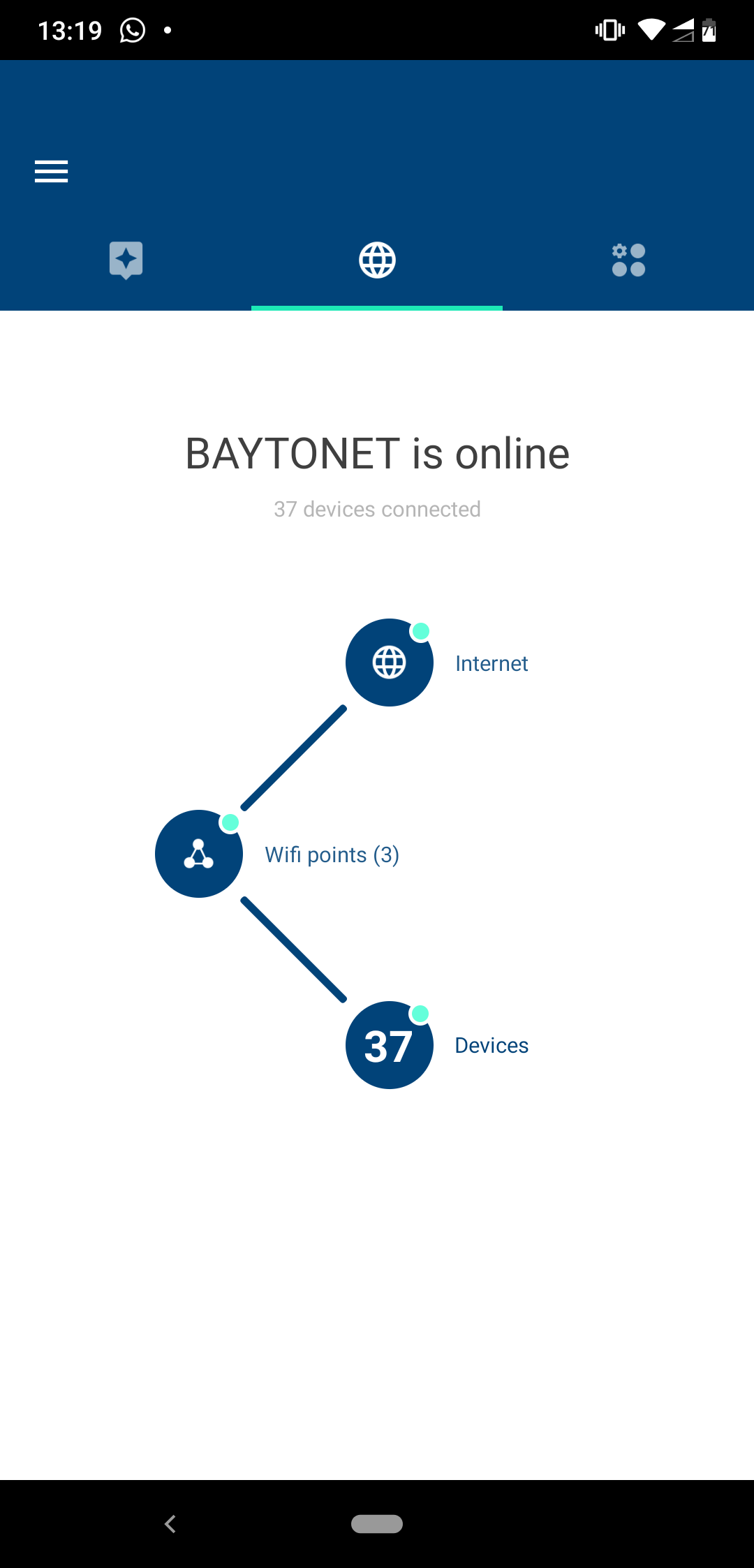
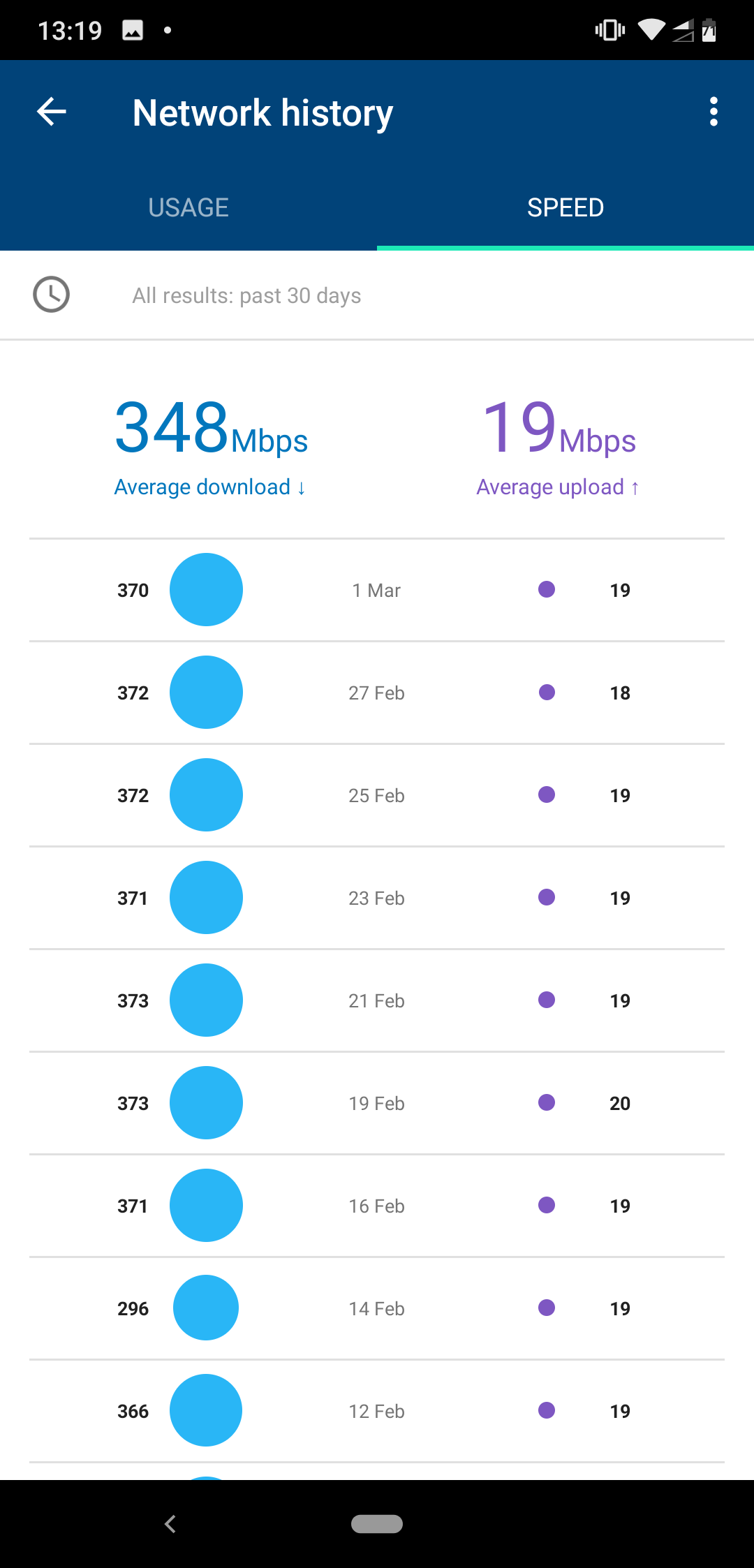
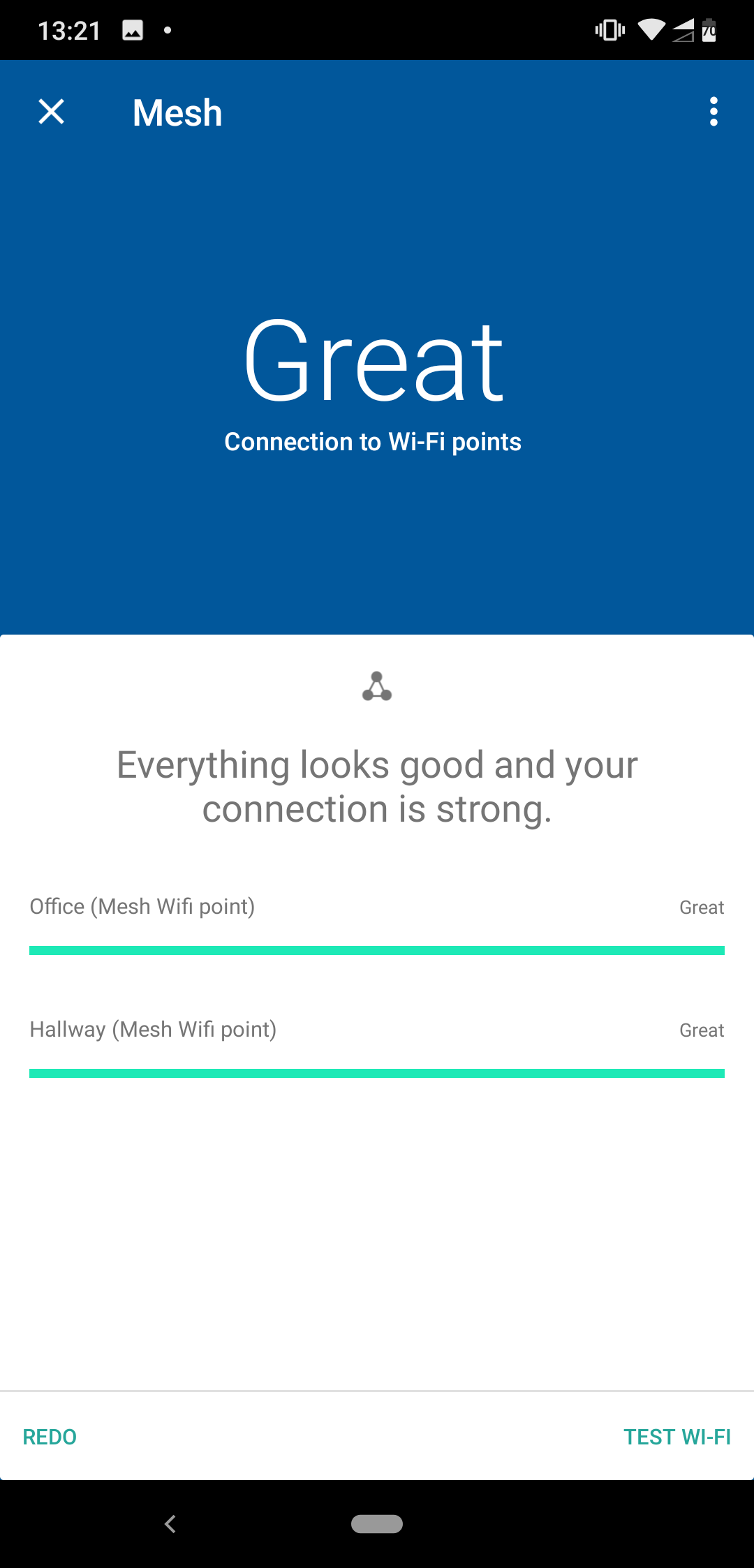
I also liked parental controls, the various tools for troubleshooting (testing mesh, network speed, individual wifi speed of devices connected), and integrated home control, if a little unnecessary having the home app already on my devices already.
The WiFi app is a great example of mobile-first administration that I wish more companies embraced (the Orbi app lacks a considerable amount of options, instead requiring I fall back to the web interface instead, which I’ll cover shortly).
On the hardware itself the puck design is small and compact. While I chose to hide them out of the way they’re by no means offensive. I also appreciate that any node can be primary.
If everything had remained like this it would have been perfect and I’d not be comparing products in this post.
Completely let down by the software
#Unfortunately things started going downhill before Christmas, when I noticed I’d regularly lose access to my servers from outside the house.
It didn’t take long to figure out what happened; effectively Google WiFi was dropping servers randomly into an “inactive” state, and once that happened, the DHCP reservation switched to “unavailable”. killing the port forward.
Often times the whole Google WiFi network required a reboot to get it to pick up my servers again, and as this progressed it got to a point where I’d have to reboot the network entirely, and SSH into the affected servers to generate traffic in order for Google WiFi to detect them, multiple times a day.
I logged a ticket, but also started tweeting about it:
For context, #GoogleWifi requires a DHCP reservation even against servers with static IPs.
It isn't possible to create a port forward unless this is done (no port > IP basic functionality here).
Once a reservation is made, you then select it to create a port forward.
— Jason Bayton (@JasonBayton) January 5, 2019
Manually logging in became tiresome, so on the main server handling most of my traffic (HAProxy) I set up a cronjob to automatically pull down ISOs in order to keep the connection “alive” between the server and Google Wifi (NB, it’s a wired server):
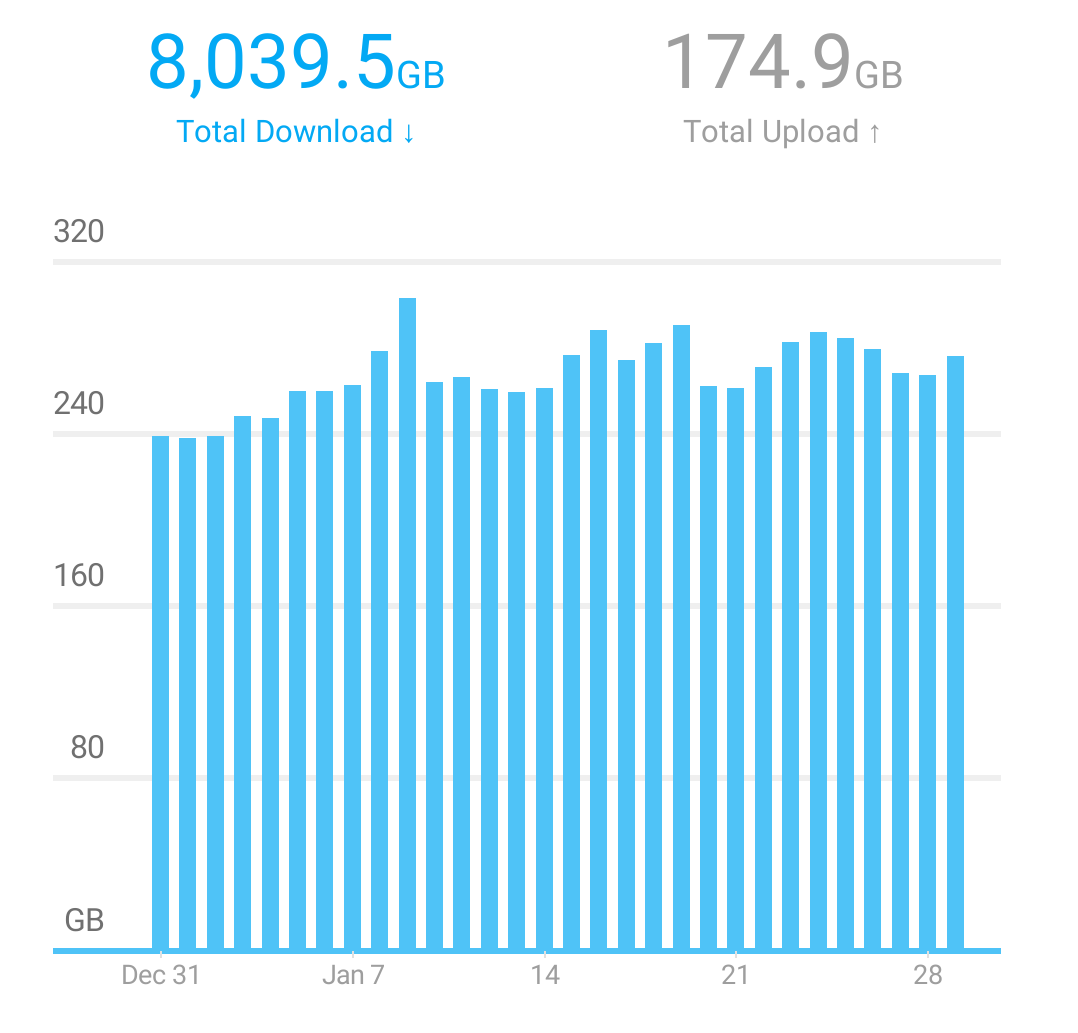 *Is this enough traffic? Google WiFi didn’t think so8
*Is this enough traffic? Google WiFi didn’t think so8
Meanwhile a ticket with Google support wasn’t getting me very far, with them focusing more on the fact the satellites were on a different IP range (class A network) than the hub, an issue caused because Google WiFi wouldn’t offer the customisation I needed for DHCP, at one point I was even told Google WiFi doesn’t support class A networks, but didn’t receive any documentation or further clarification when I asked for where this is stated in the manual.
Once they’d tired of me reiterating my network was fine, they then turned their attention to issues they detected with Virgin Media (ISP), and asked I raise a ticket with them (for Google WiFi forgetting devices?). VM subsequently confirmed my broadband was fine (I humoured the request), and so back to Google it went.
Eventually during more troubleshooting, a bug was identified with the priority feature, in that on their end it was showing devices given network priority despite the app showing no such thing, and troubleshooting couldn’t continue until this was fixed with a factory reset.
As Google WiFi offers no means for backing up or restoring config, I figured if I’m going to spend an hour setting up my network again, I might as well try another product.
From my few months of use I found myself more frustrated by Google WiFi’s unreliability than any other product in recent history.
Enter Orbi
#After reaching out to Netgear on Twitter, they were kind enough to send over a 3 node Orbi kit as a like-for-like replacement of the Google WiFi setup:
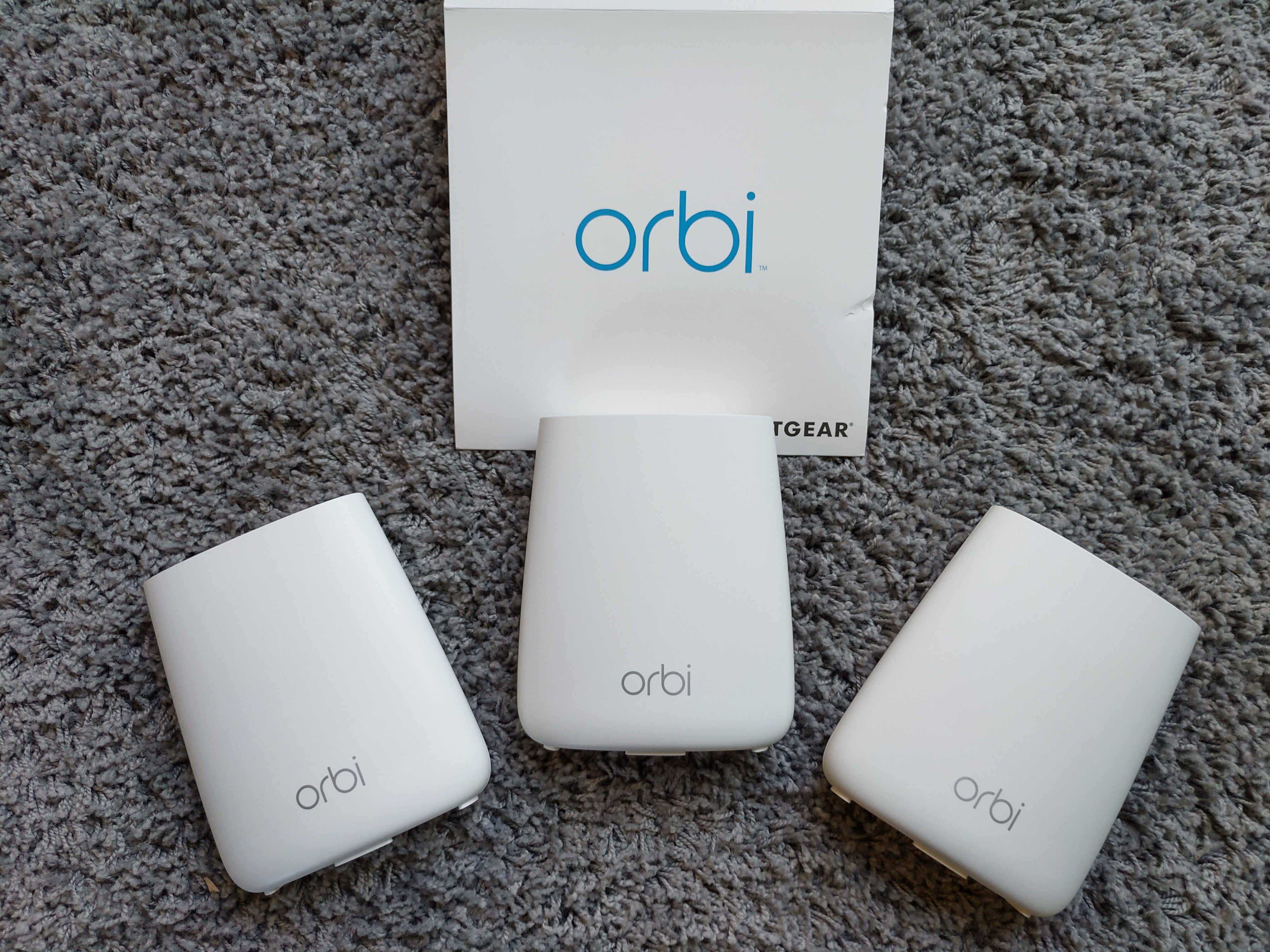
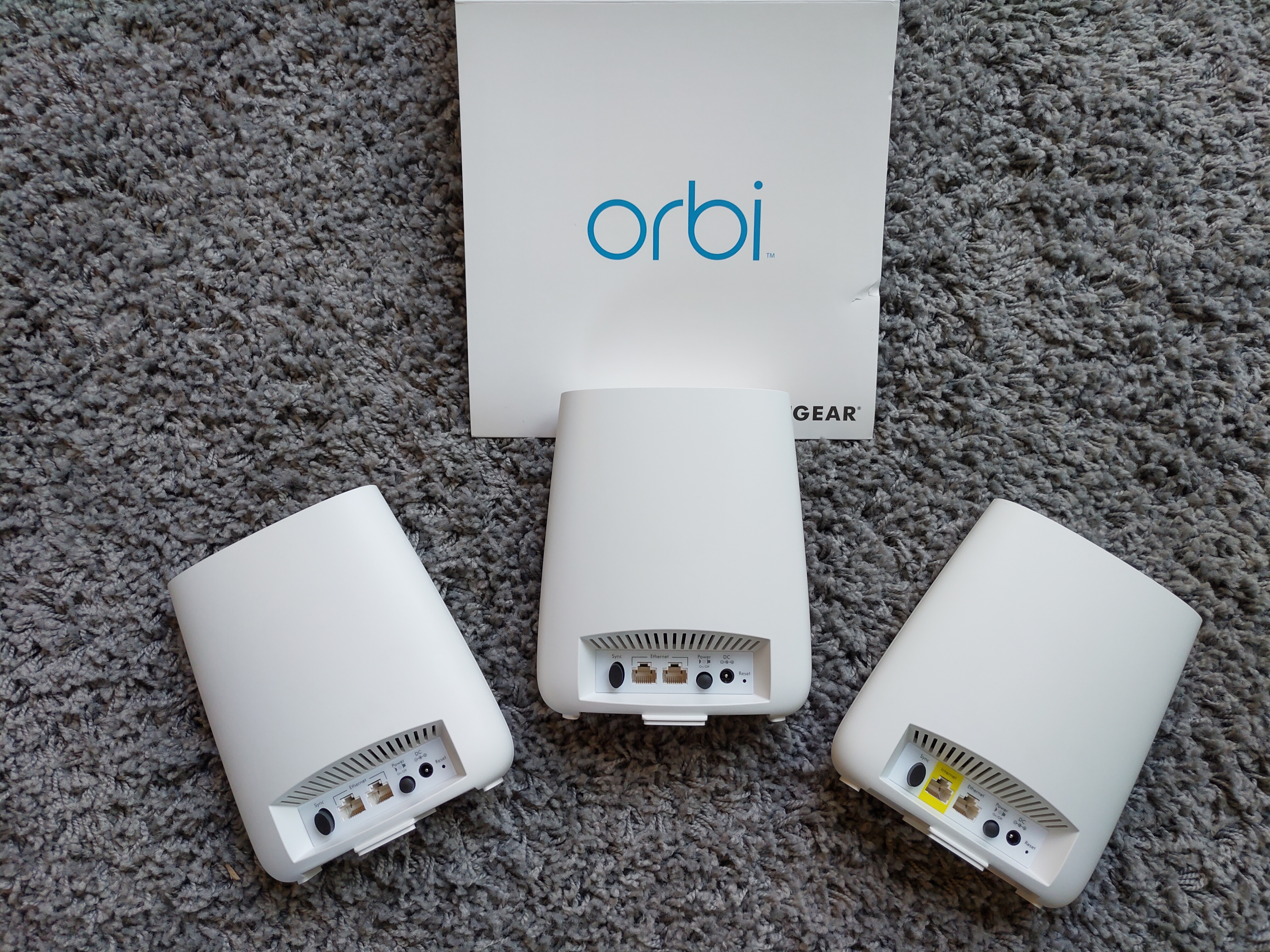
Orbi right off the bat offered an upgrade, boasting AC2200 over Google WiFi’s AC1200; I looked forward potentially to slightly better WiFi performance.
Unlike Google WiFi, the Orbi app offers fewer features and instead diverts users into an admin web interface most who tinker with routers would be familiar with.
Would it be nice if the Orbi app offered improved functionality? Yes, but things like speed tests, network checks, and visibility of connected clients are all present and accounted for, with a little additional functionality gained through another of Netgear’s apps, Genie (though I rarely use it).
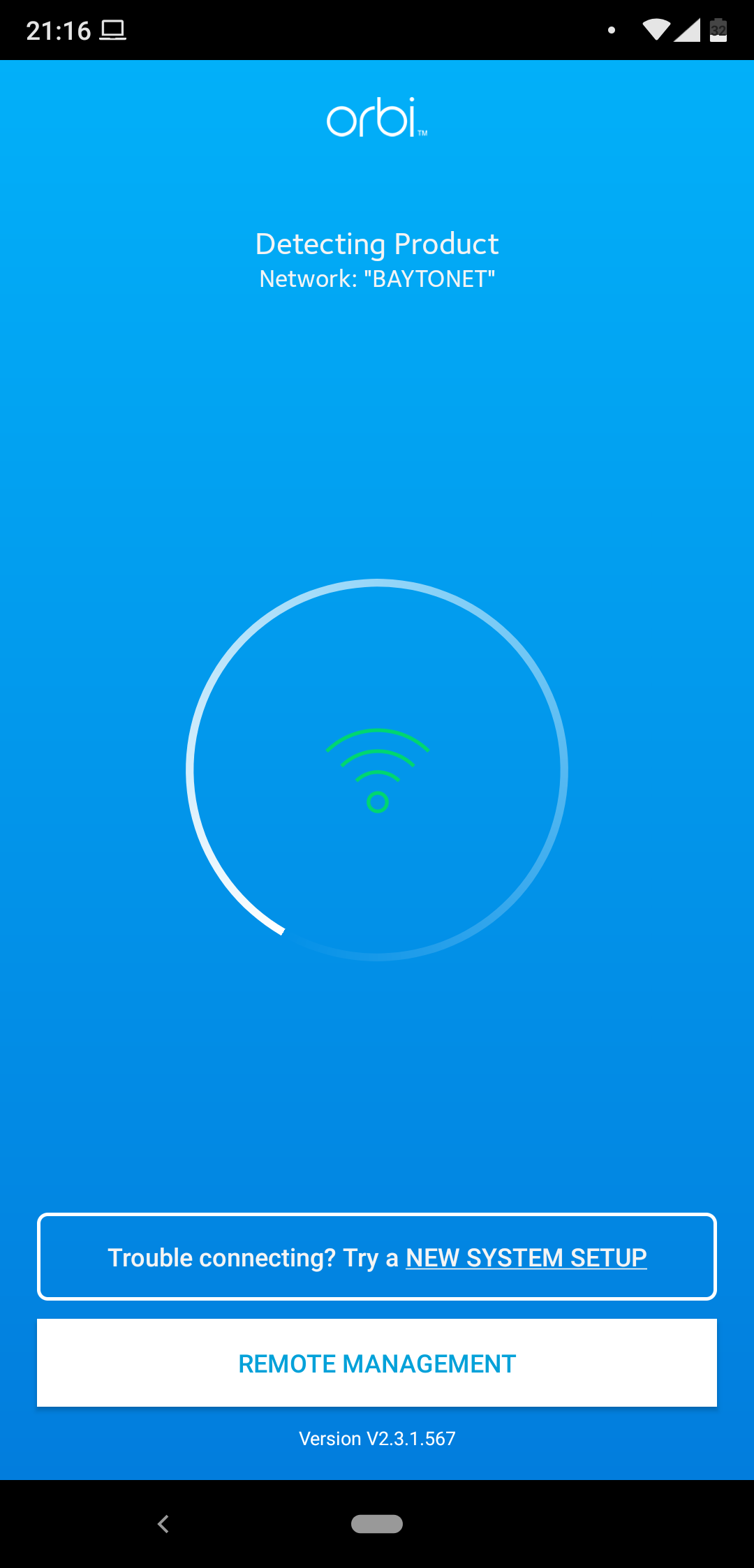
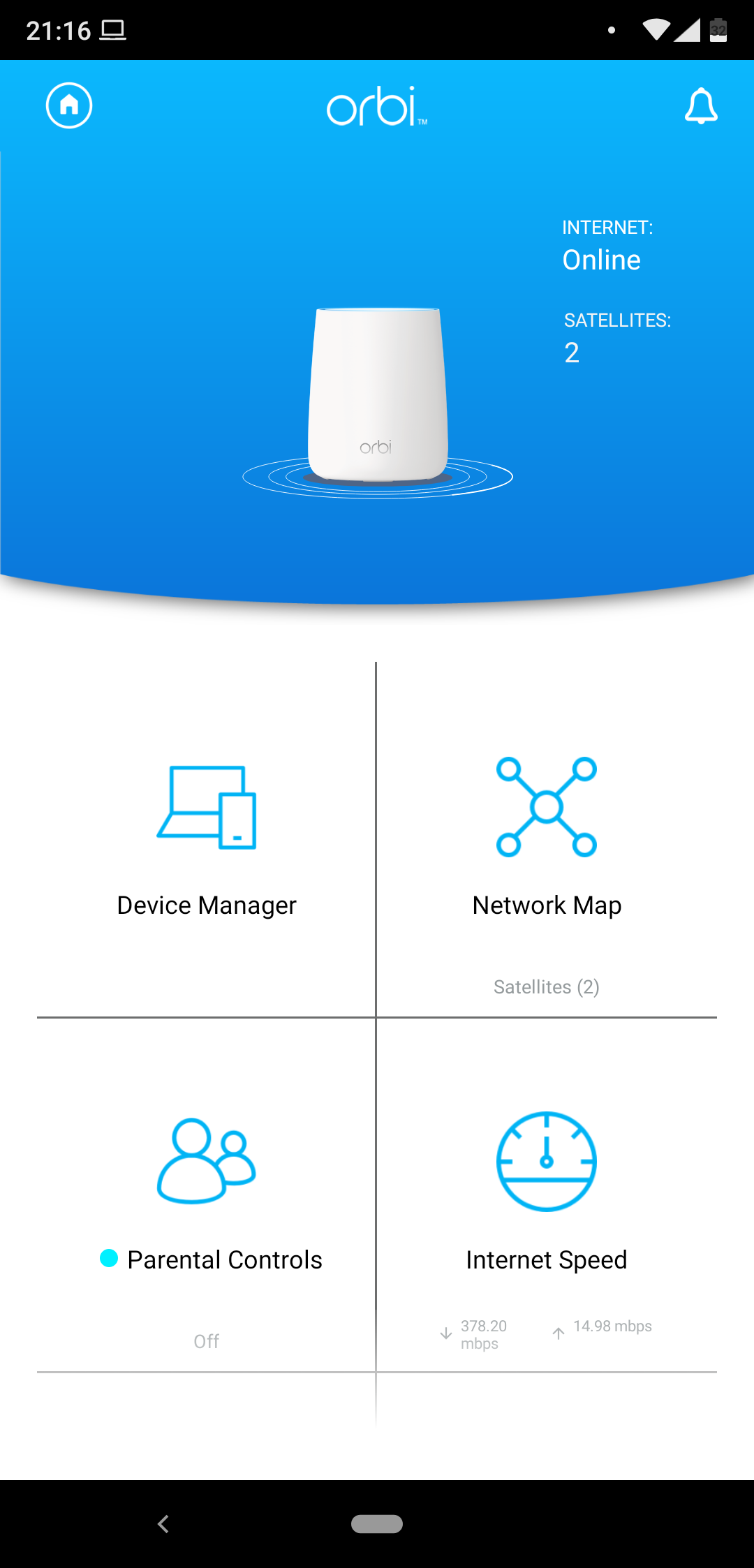
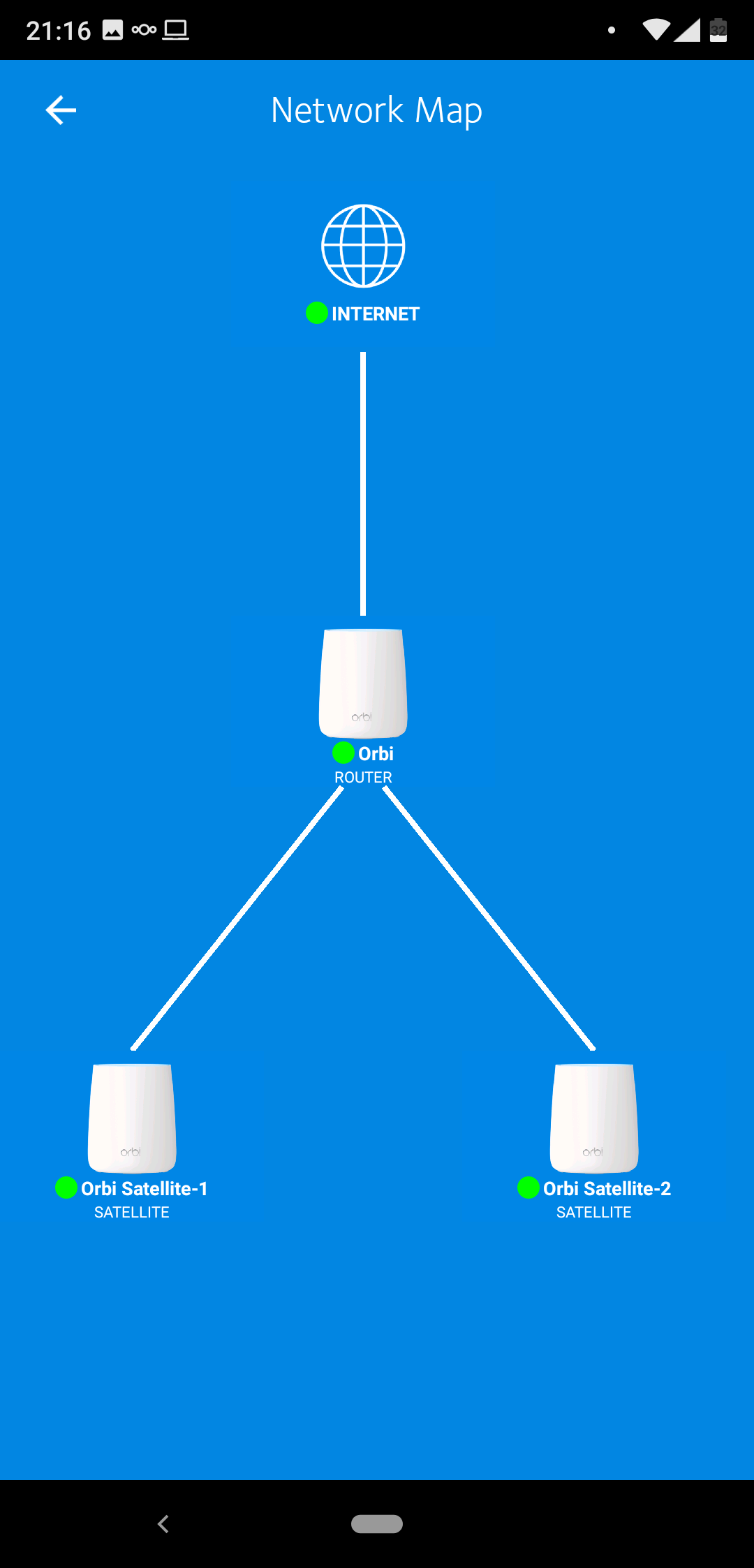
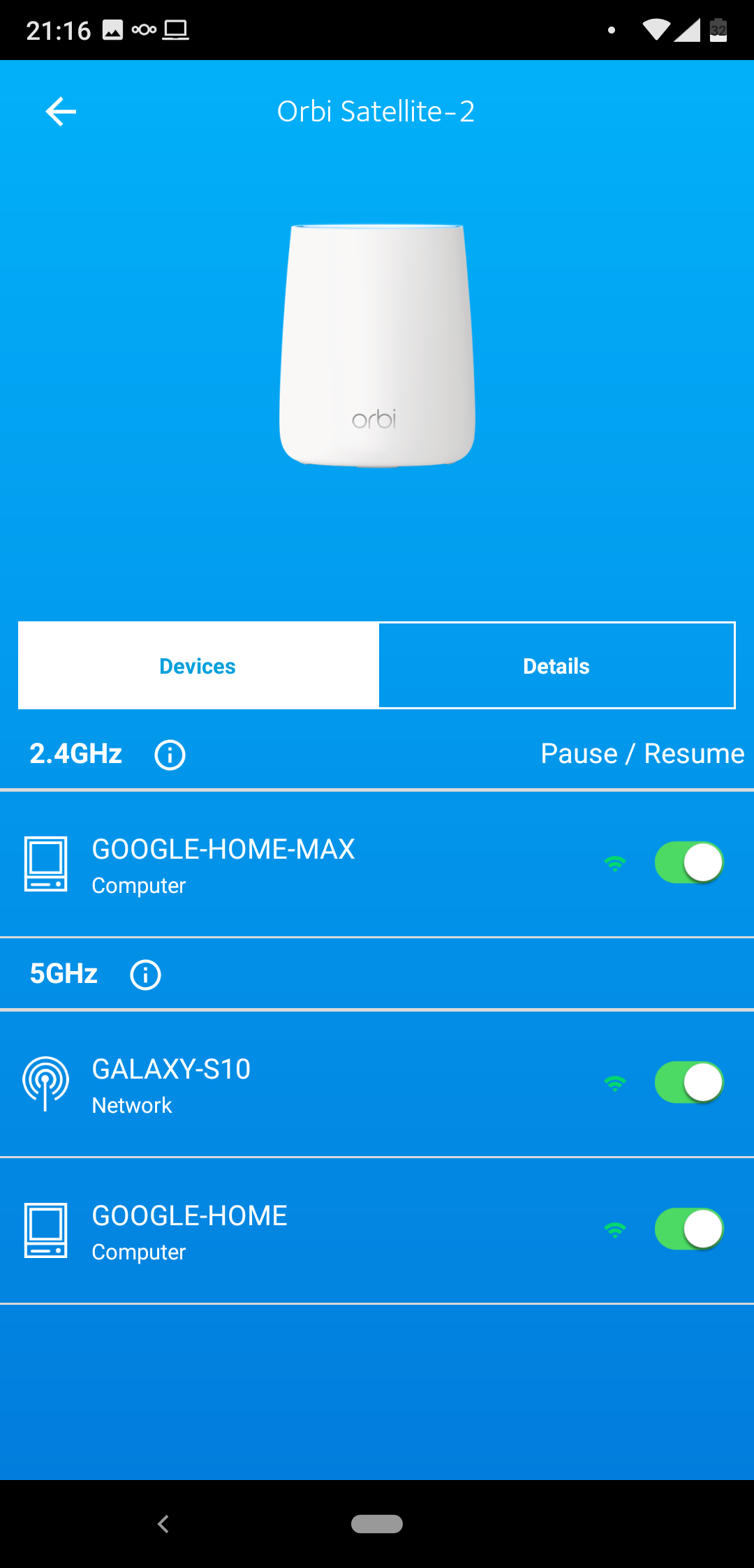
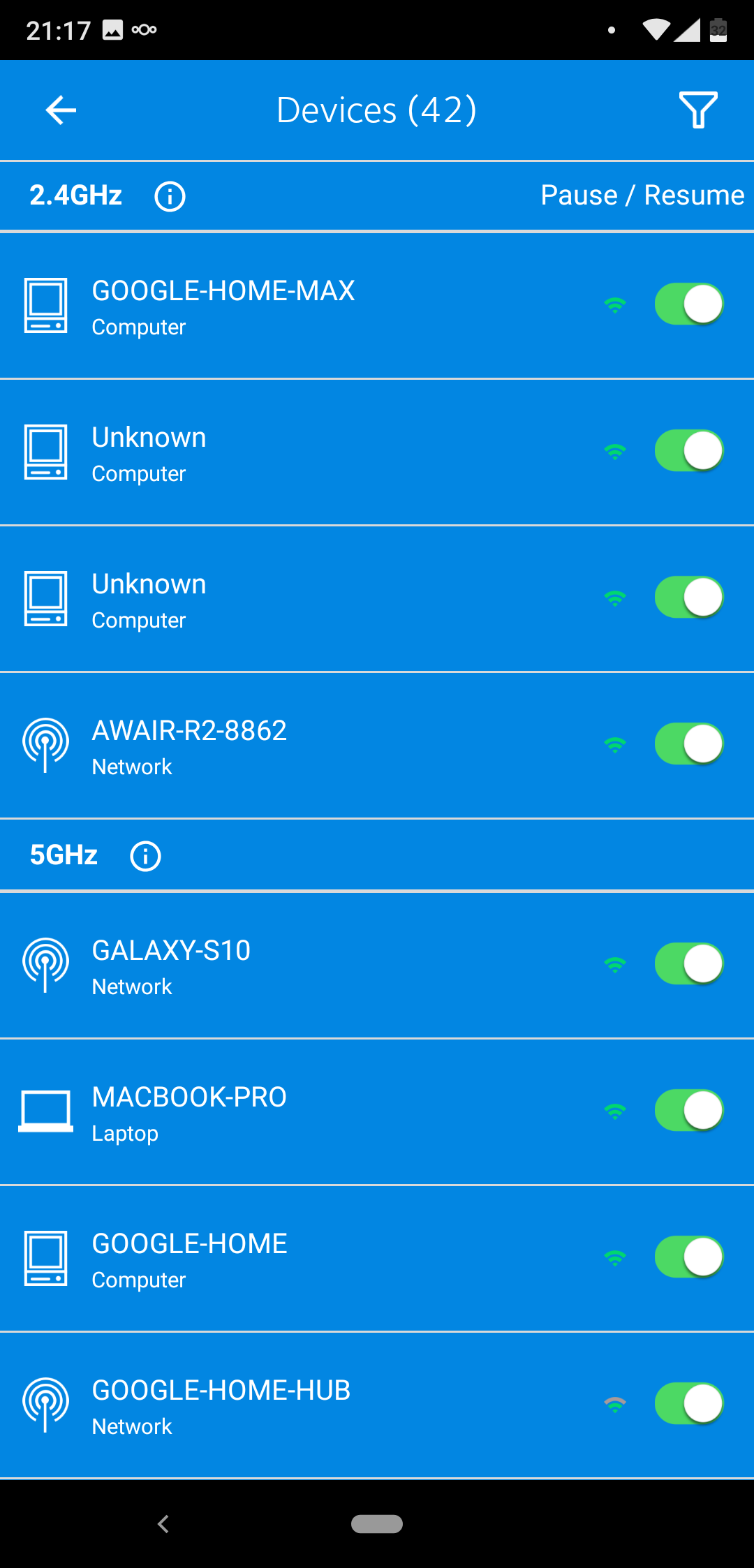
Netgear also partner with 3rd parties for some of the functionality offered, which is built-in with Google WiFi, in particular Disney for parental controls (yet to test!) and Speedtest.net for monitoring the speed of the ISP.
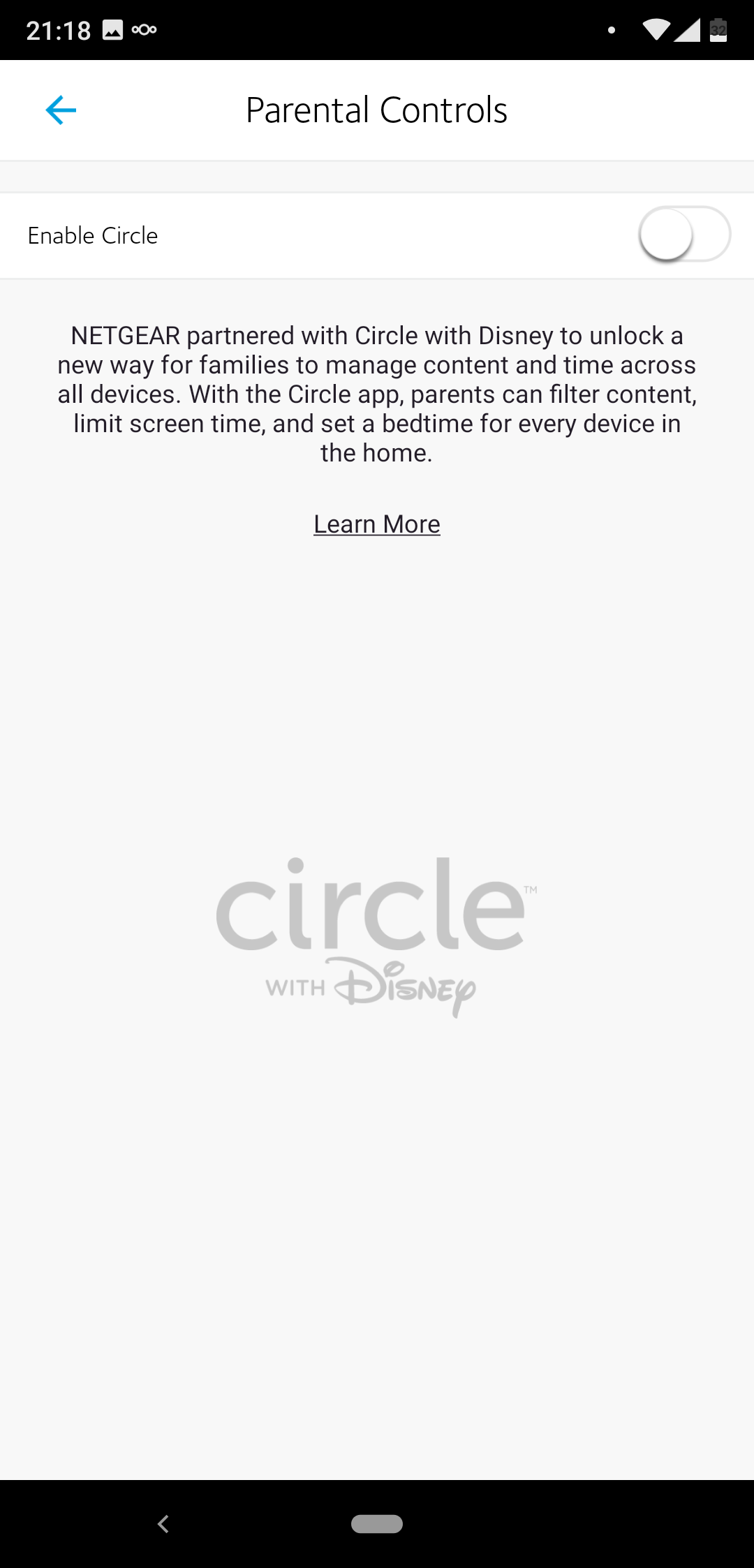
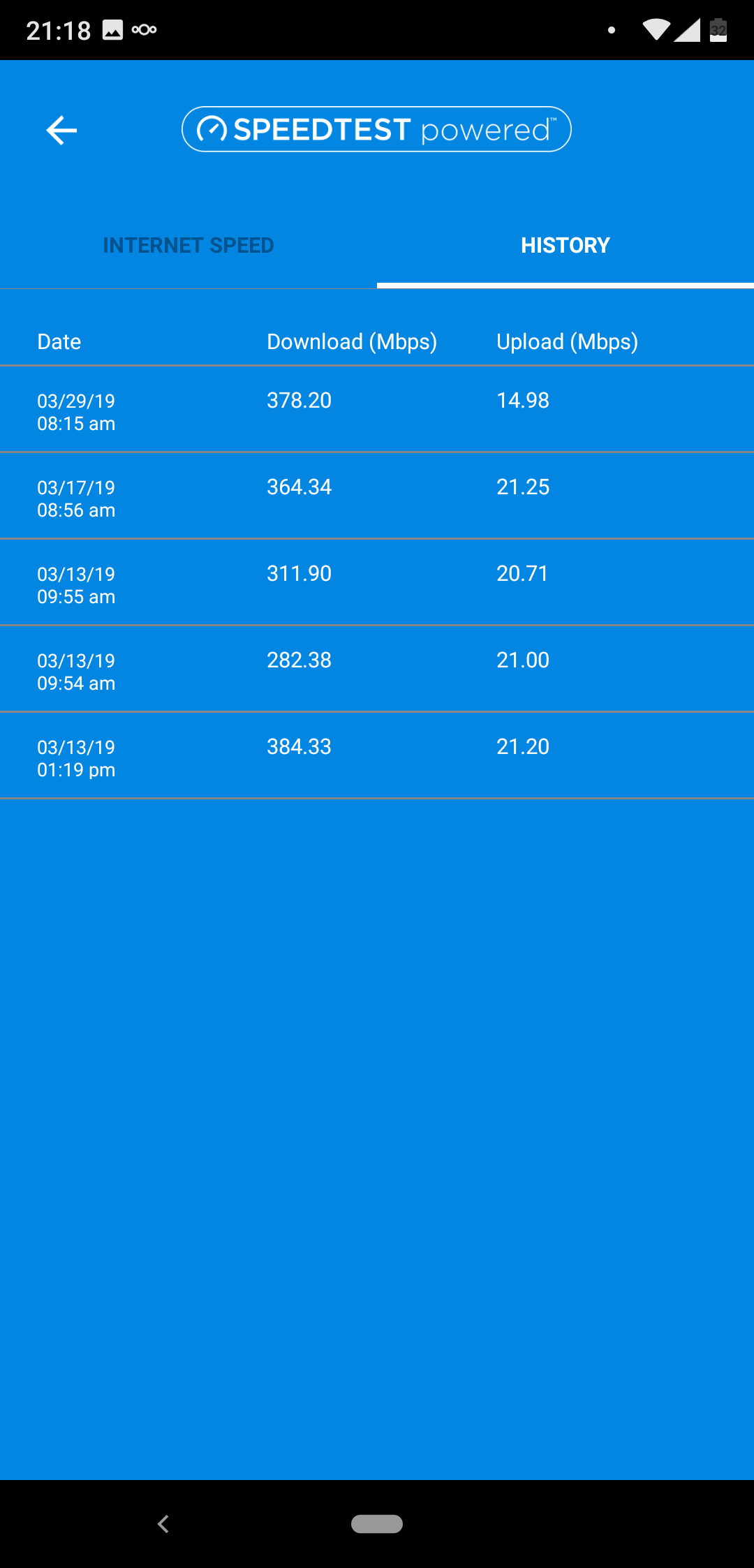
I’m also rather appreciative of the traffic monitoring capabilities, but do wish the settings for limits were a little more granular, and traffic monitoring in general was a little more advanced in telling me what sort of data was being used (streaming, etc)
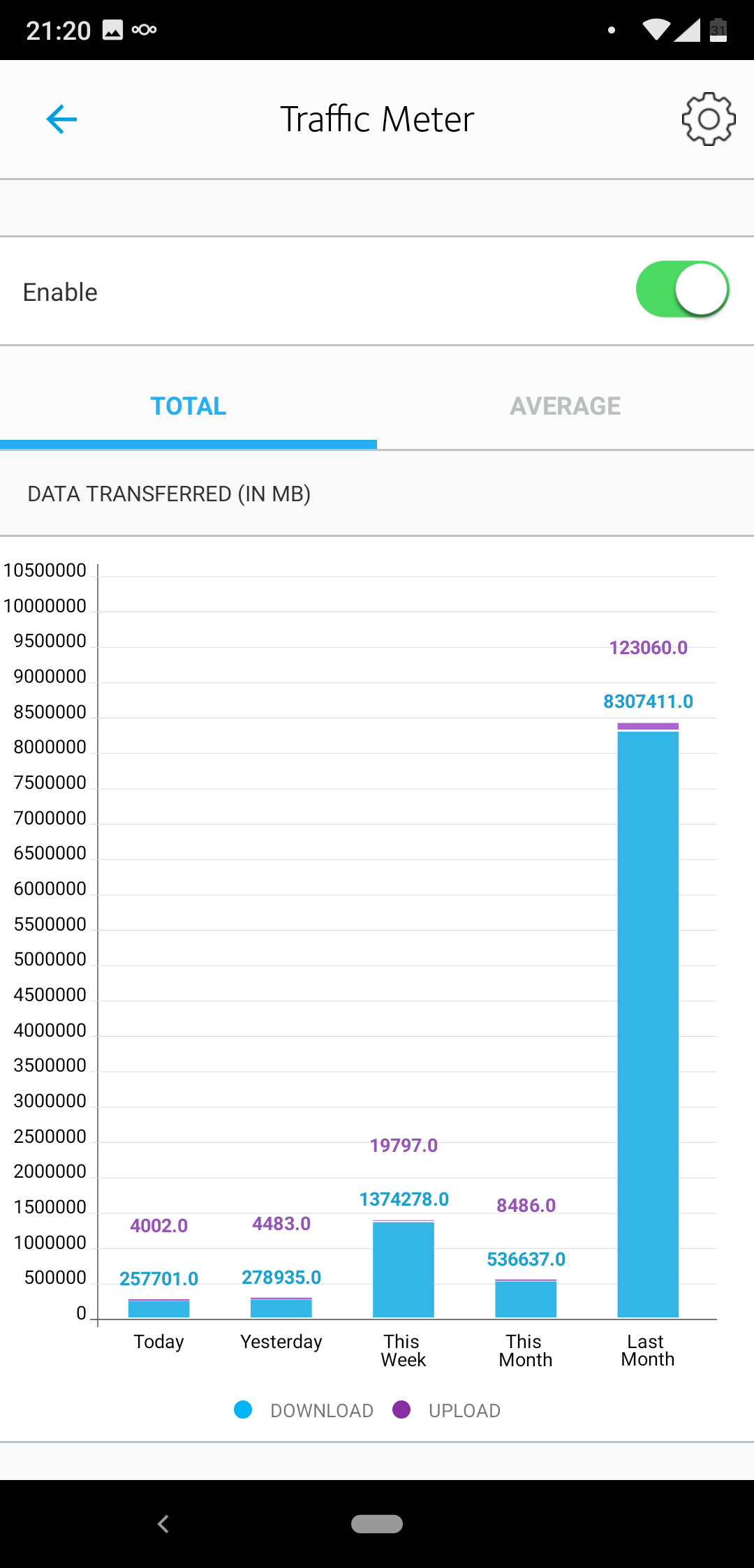
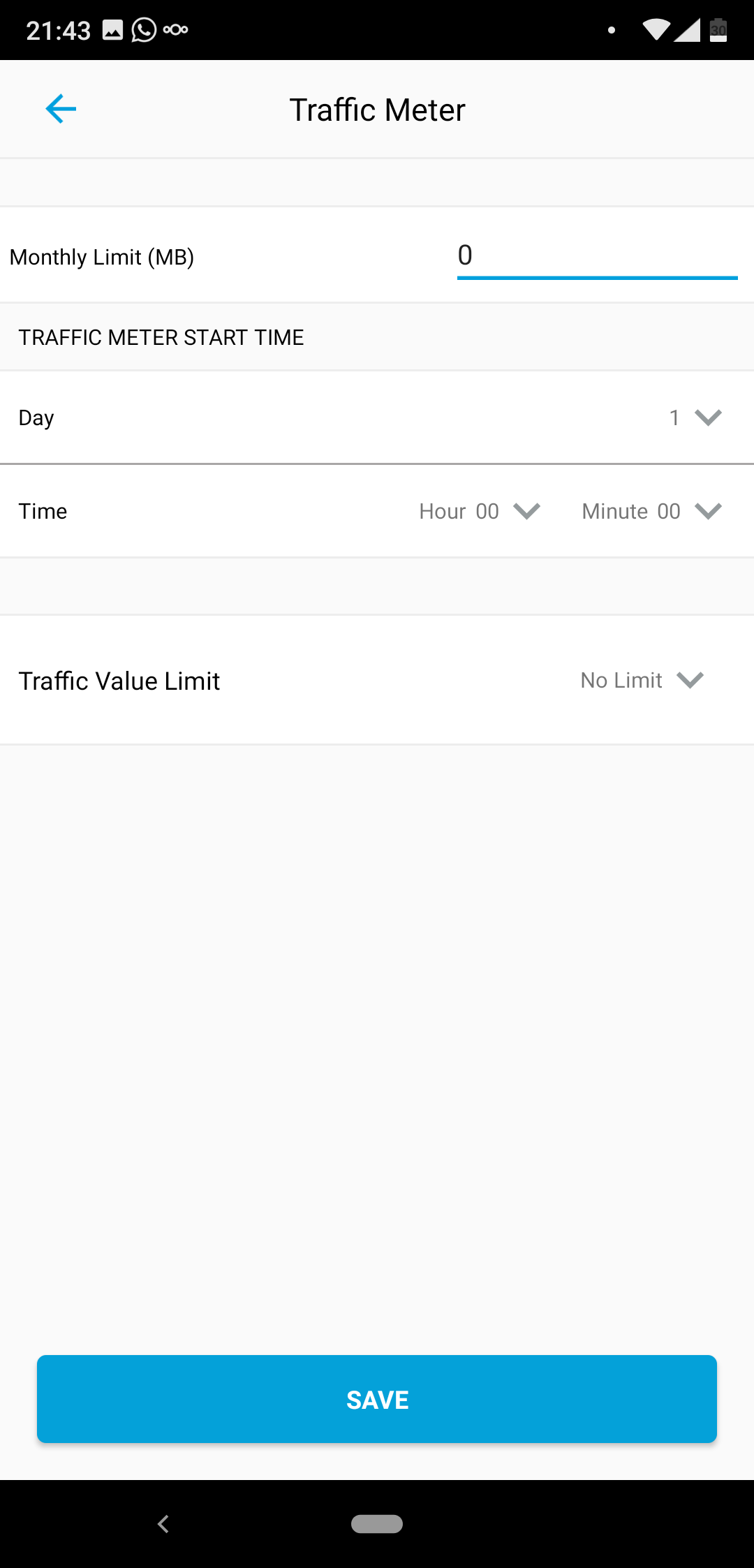
Legacy or not, the web interface offers everything I need and more; in particular features missed from Google WiFi, such as assigning port forwards based on IP rather than a DHCP reservation (honestly would have never thought I’d be describing this as a feature).

Orbi unboxed with a slightly older firmware version and didn’t appear to want to update to the latest (no updates detected) but as a typical Netgear product, fully supported manual updates.
As recommended, I updated the two satellites first, then the hub last with the two separate firmware packages. The network went down for a few minutes but was up and running once more in no time. Further updates were managed automatically and didn’t require this process.
The only issue I had, much like Google WiFi, was assigning a DHCP range I was happy with. For whatever reason Orbi had three of the four octets greyed out when selecting a range, despite otherwise fully supporting my class A network.
The fix for this, because I was not going to be forced to utilise the same range as the router sat on for DHCP, was to break out Chrome Devtools, re-enable the disabled octets, update the range from X.X.X.10-254 to X.X.100.10-254, and click save.

Once saved and the page refreshed, the interface appears to once more show a limited range, however on the backend, which I later confirmed with a quick telnet session, the IP range had updated and everything was working perfectly. I raised this with Netgear and my feedback was sent to engineering for consideration.
In testing I find the connection to be stable moving through the house, and though clients do still like to remain connected to satellites when moving about, as soon as a satellite goes out of range it picks up another rapidly.
I find range to be roughly similar to that of Google WiFi, but generally a little faster.
One other feature I’d have liked to see is cert-based authentication for WiFi, which Orbi (nor Orbi Pro!) features today. With Android Q around the corner I’ve been eager to test cert-based WiFi auth in QR & NFC payloads, however don’t yet have the infrastructure to do so. This was also fed back to development, so hopefully may be supported in future.
One other feature Orbi lacks is support for DNS over TLS. My Android 9 handsets are all configured to use CloudFlare’s 1.1.1.1 secure DNS service, but I’m unable at the moment to leverage this on a network level.
On the hardware side I don’t have any particularly strong feelings aesthetically. The Netgear nodes are a fair bit larger than Google WiFi but still pleasant enough to look at. This opinion comes from someone who at one point ran a network on a beaten up old Dell Optiplex though, so everything today seems pretty inoffensive by comparison!
Netgear assign a master and satellite with their 3 node kit, which means unlike Google’s WiFi it’s not a case of picking any to be a master and the others to run as satellites. I don’t know why Netgear took this approach but in honesty it’s not really a concern.
Both products offer the capability of adding more nodes/satellites for larger homes or increased coverage, though it definitely appears Netgear have a leg up on Google in terms of extensibility:

I don’t need a dedicated satellite for WiFi in the garden, but I certainly want one!
Conclusion
#Neither product could necessarily be considered perfect for what I want, but the unrelenting software issues I faced with Google WiFi, for such an expensive product, was simply unacceptable.
For most I imagine this wouldn’t be an issue, after all Google have over-simplified everything about WiFi seemingly as far as possible to make it a great out-of-box experience for the majority of internet users wanting to dabble with mesh networking.
For me though, nothing beats a router I have shell access into, and the comparably advanced (in reality pretty standard) networking features I’ve come to rely on mean I need a more traditionally-approached mesh network product. Orbi fits the bill.
While Netgear perhaps falls short on the mobile-first side of things, they certainly make up for in technical capability and extensibility.
If only they had a satellite with Google assistant, I’d be sticking them everywhere!
Orbi can be purchased on Amazon:
Many thanks to Netgear for making this post possible.
Articles
2025
- RCS Archival and you: clearing up the misconceptions
- Device Trust from Android Enterprise: What it is and how it works (hands-on)
- Android developer verification: what this means for consumers and enterprise
- AMAPI finally supports direct APK installation, this is how it works
- The Android Management API doesn't support pulling managed properties (config) from app tracks. Here's how to work around it
- Hands-on with CVE-2025-22442, a work profile sideloading vulnerability affecting most Android devices today
- AAB support for private apps in the managed Google Play iFrame is coming, take a first look here
- What's new (so far) for enterprise in Android 16
2024
- Android 15: What's new for enterprise?
- How Goto's acquisition of Miradore is eroding a once-promising MDM solution
- Google Play Protect no longer sends sideloaded applications for scanning on enterprise-managed devices
- Mobile Pros is moving to Discord
- Avoid another CrowdStrike takedown: Two approaches to replacing Windows
- Introducing MANAGED SETTINGS
- I'm joining NinjaOne
- Samsung announces Knox SDK restrictions for Android 15
- What's new (so far) for enterprise in Android 15
- Google quietly introduces new quotas for unvalidated AMAPI use
- What is Play Auto Install (PAI) in Android and how does it work?
- AMAPI publicly adds support for DPC migration
- How do Android devices become certified?
2023
- Mute @channel & @here notifications in Slack
- A guide to raising better support requests
- Ask Jason: How should we manage security and/or OS updates for our devices?
- Pixel 8 series launches with 7 years of software support
- Android's work profile behaviour has been reverted in 14 beta 5.3
- Fairphone raises the bar with commitment to Android updates
- Product files: The DoorDash T8
- Android's work profile gets a major upgrade in 14
- Google's inactive account policy may not impact Android Enterprise customers
- Product files: Alternative form factors and power solutions
- What's new in Android 14 for enterprise
- Introducing Micro Mobility
- Android Enterprise: A refresher
2022
- What I'd like to see from Android Enterprise in 2023
- Thoughts on Android 12's password complexity changes
- Google Play target API requirements & impact on enterprise applications
- Sunsetting Discuss comment platform
- Google publishes differences between Android and Android Go
- Android Go & EMM support
- Relaunching bayton.org
- AER dropped the 3/5 year update mandate with Android 11, where are we now?
- I made a bet with Google (and lost)
2020
- Product files: Building Android devices
- Google announce big changes to zero-touch
- VMware announces end of support for Device Admin
- Google launch the Android Enterprise Help Community
- Watch: An Android Enterprise discussion with Hypergate
- Listen again: BM podcast #144 - Jason Bayton & Russ Mohr talk Android!
- Google's Android Management API will soon support COPE
- Android Enterprise in 11: Google reduces visibility and control with COPE to bolster privacy.
- The decade that redefined Android in the enterprise
2019
- Why Intune doesn't support Android Enterprise COPE
- VMware WS1 UEM 1908 supports Android Enterprise enrolments on closed networks and AOSP devices
- The Bayton 2019 Android Enterprise experience survey
- Android Enterprise Partner Summit 2019 highlights
- The Huawei ban and Enterprise: what now?
- Dabbling with Android Enterprise in Q beta 3
- Why I moved from Google WiFi to Netgear Orbi
- I'm joining Social Mobile as Director of Android Innovation
- Android Enterprise in Q/10: features and clarity on DA deprecation
- MWC 2019: Mid-range devices excel, 5G everything, form-factors galore and Android Enterprise
- UEM tools managing Android-powered cars
- Joining the Android Enterprise Experts community
- February was an interesting month for OEMConfig
- Google launch Android Enterprise Recommended for Managed Service Providers
- Migrating from Windows 10 Mobile? Here's why you should consider Android
- AER expands: Android Enterprise Recommended for EMMs
- What I'd like to see from Android Enterprise in 2019
2018
- My top Android apps in 2018
- Year in review: 2018
- MobileIron Cloud R58 supports Android Enterprise fully managed devices with work profiles
- Hands on with the Huawei Mate 20 Pro
- Workspace ONE UEM 1810 introduces support for Android Enterprise fully managed devices with work profiles
- G Suite no longer prevents Android data leakage by default
- Live: Huawei Mate series launch
- How to sideload the Digital Wellbeing beta on Pie
- How to manually update the Nokia 7 Plus to Android Pie
- Hands on with the BQ Aquaris X2 Pro
- Hands on with Sony OEMConfig
- The state of Android Enterprise in 2018
- BYOD & Privacy: Don’t settle for legacy Android management in 2018
- Connecting two Synologies via SSH using public and private key authentication
- How to update Rsync on Mac OS Mojave and High Sierra
- Intune gains support for Android Enterprise COSU deployments
- Android Enterprise Recommended: HMD Global launch the Nokia 3.1 and Nokia 5.1
- Android Enterprise Partner Summit 2018 highlights
- Live: MobileIron LIVE! 2018
- Android Enterprise first: AirWatch 9.4 lands with a new name and focus
- Live: Android Enterprise Partner Summit 2018
- Samsung, Oreo and an inconsistent Android Enterprise UX
- MobileIron launch Android Enterprise work profiles on fully managed devices
- Android P demonstrates Google's focus on the enterprise
- An introduction to managed Google Play
- MWC 2018: Android One, Oreo Go, Android Enterprise Recommended & Android Enterprise
- Enterprise ready: Google launch Android Enterprise Recommended
2017
- Year in review: 2017
- Google is deprecating device admin in favour of Android Enterprise
- Hands on with the Sony Xperia XZ1 Compact
- Moto C Plus giveaway
- The state of Android Enterprise in 2017
- Samsung launched a Note 8 for enterprise
- MobileIron officially supports Android Enterprise QR code provisioning
- Android zero-touch enrolment has landed
- MobileIron unofficially supports QR provisioning for Android Enterprise work-managed devices, this is how I found it
- Hands on with the Nokia 3
- Experimenting with clustering and data replication in Nextcloud with MariaDB Galera and SyncThing
- Introducing documentation on bayton.org
- Goodbye Alexa, Hey Google: Hands on with the Google Home
- Restricting access to Exchange ActiveSync
- What is Mobile Device Management?
- 8 tips for a successful EMM deployment
- Long-term update: the fitlet-RM, a fanless industrial mini PC by Compulab
- First look: the FreedomPop V7
- Vault7 and the CIA: This is why we need EMM
- What is Android Enterprise (Android for Work) and why is it used?
- Introducing night mode on bayton.org
- What is iOS Supervision and why is it used?
- Hands on with the Galaxy TabPro S
- Introducing Nextcloud demo servers
- Part 4 - Project Obsidian: Obsidian is dead, long live Obsidian
2016
- My top Android apps 2016
- Hands on with the Linx 12V64
- Wandera review 2016: 2 years on
- Deploying MobileIron 9.1+ on KVM
- Hands on with the Nextcloud Box
- How a promoted tweet landed me on Finnish national news
- Using RWG Mobile for simple, cross-device centralised voicemail
- Part 3 – Project Obsidian: A change, data migration day 1 and build day 2
- Hands on: fitlet-RM, a fanless industrial mini PC by Compulab
- Part 2 - Project Obsidian: Build day 1
- Part 1 - Project Obsidian: Objectives & parts list
- Part 0 - Project Obsidian: Low power NAS & container server
- 5 Android apps improving my Chromebook experience
- First look: Android apps on ChromeOS
- Competition: Win 3 months of free VPS/Container hosting - Closed!
- ElasticHosts review
- ElasticHosts: Cloud Storage vs Folders, what's the difference?
- Adding bash completion to LXD
- Android N: First look & hands-on
- Springs.io - Container hosting at container prices
- Apple vs the FBI: This is why we need MDM
- Miradore Online MDM: Expanding management with subscriptions
- Lenovo Yoga 300 (11IBY) hard drive upgrade
- I bought a Lenovo Yoga 300, this is why I'm sending it back
- Restricting access to Exchange ActiveSync
- Switching to HTTPS on WordPress
2015
2014
- Is CYOD the answer to the BYOD headache?
- BYOD Management: Yes, we can wipe your phone
- A fortnight with Android Wear: LG G Watch review
- First look: Miradore Online free MDM
- Hands on: A weekend with Google Glass
- A month with Wandera Mobile Gateway
- Final thoughts: Dell Venue Pro 11 (Atom)
- Thoughts on BYOD
- Will 2014 bring better battery life?
- My year in review: Bayton.org
- The best purchase I've ever made? A Moto G for my father
2013
2012
- My Top Android Apps 12/12
- The Nexus 7 saga: Resolved
- Recycling Caps Lock into something useful - Ubuntu (12.04)
- The Nexus 7 saga continues
- From Wows to Woes: Why I won't be recommending a Nexus7 any time soon.
- Nexus7: What you need to know
- Why I disabled dlvr.it links on Facebook
- HTC Sense: Changing the lockscreen icons from within ADW
2011
- Push your Google+ posts to Twitter and Facebook
- Using multiple accounts with Google.
- The "Wn-R48" (Windows on the Cr-48)
- Want a Google+ invite?
- Publishing to external sources from Google+
- Dell Streak review. The Phone/Tablet Hybrid
- BlueInput: The Bluetooth HID driver Google forgot to include
- Pushing Buzz to Twitter with dlvr.it
- Managing your social outreach with dlvr.it
- When Awe met Some. The Cr-48 and Gnome3.
- Living with Google's Cr-48 and the cloud.
- Downtime 23-25/04/2011
- Are you practising "safe surfing"?
- The Virtualbox bug: "Cannot access the kernel driver" in Windows
- Putting tech into perspective
2010
- Have a Google Buzz Christmas
- Root a G1 running Android 1.6 without recovery!
- Windows 7 display issues on old Dell desktops
- Google added the Apps flexibility we've been waiting for!
- Part I: My 3 step program for moving to Google Apps
- Downloading torrents
- Completing the Buzz experience for Google Maps Mobile
- Quicktip: Trial Google Apps
- Quicktip: Save internet images fast
- Turn your desktop 3D!
- Part III - Device not compatible - Skype on 3
- Swype not compatible? ShapeWriter!
- Don't wait, get Swype now!
- HideIP VPN. Finally!
- Google enables Wave for Apps domains
- Aspire One touch screen
- Streamline XP into Ubuntu
- Edit a PDF with Zamzar
- Google offering Gmail addresses in the UK
- Google Wave: Revolutionising blogs!
- Hexxeh's Google Chrome OS builds
- Update: Buzz on Windows Mobile
- Alternatives to Internet Explorer
- Wordress 3.0 is coming!
- Skype for WM alternatives
- Browsing on a (data) budget? Opera!
- Buzz on unsupported mobiles
- Buzz on your desktop
- What's all the Buzz?
- Part II: Device not compatible - Skype on 3
- Part I - Device not compatible - Skype on 3
- Dreamscene on Windows 7
- Free Skype with 3? There's a catch..